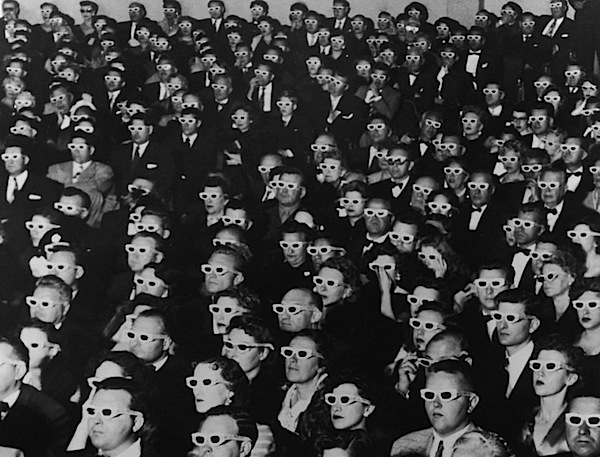Consumers/Consumption
Consumers and Consumption is the main driving source of why all the imagery, advertisements, commercials, products, being thrown in our face every day.
By definition a consumer is s a person or group of people who are the final users of products and or services generated within a social system. A consumer may be a person or group, such as a
household (Wikipedia.com). .
At the end of the day without us the consumer these businesses have nothing but since we do buy into the game we are their main target.
We are the ones buying everything that we see because it may give us self-worth, or because we want it or maybe we just need it to survive.
Every gender, race , ethnicity, sexual orientation, everything is targeted and we are all consumers.
We see these products and get addicted to brands.
Power is having an influence over something or someone, or some sort of dominance. In the case of imagery and culture advertisements are holding the power of influencing the consumer to by their product. According to Berger the power of “envy” is used against consumers to get them to buy things. Glamour is an example Berger uses and says “the power of the glamorous resides in their (consumer) supposed happiness: the power of the bureaucrat in his supposed authority.
The last line “the power of the bureaucrat in his supposed authority” leads into the definition of hegemony:
preponderant influence or authority over others. Advertisements, commercials, etc. all come up with ways to gain power or influence over what people think they should become. It’s kind of like how society has imprinted in our minds what the definition of beautiful is. Blond hair, skinny, long hair, white, etc. So in commercials those figures are often used like in this AXE commercial they perpetuate the idea if you use their product that these women will flock to you. The Axe gives this man the power he needs to attract these type of “beautiful” women. Here’s the commercial:
Popular Culture
Popular culture is anything that is relevant and popular in our society. Its ideas, attitudes, and things that we feel are important because of how it is embedded in our heads as important. Mainstream art, music, fashion, dance, etc. are all apart of pop culture and it may vary depending on what part of the world you live in. Images are a huge part in getting pop culture out there to influence the people and make people believe that these images they see are what they want to be, not who they are but who they want to become or need to become.
Sexism
Sexism according dictionary.com, is attitudes or behavior based on traditional stereotypes of sexual roles. We see this throughout history with men being more dominant over women so it became a norm that was represented in imagery too. Males are treated on a higher respect level then women and it has only been till this generation where we see women taking on more masculine roles. It’s not only on T.V. but it’s also in real life in the work place and relationships too. Sexism also shows gender roles (how woman and men should act). Women should be the princess waiting for her prince, cooking, cleaning, staying at home, etc. and the man is bread winner, has all the power, supposed to save the girl (you know basic Disney princess movie concept; which means we learn this at a very young age. The problem we have currently with sexism is women being pictured as a piece of meat or sexual images.
Even PETA decided to take the sexual approach with their “have a heart, go vegetarian” campaign. They use sexy women and their body parts to get people attention.
Way of looking
Barbara Kruger says in “Remote Control” makes it clear that we have a controlled way of looking at things through the lens. Kruger says “we are demi-living proof that the video camera has replaced the mirror as the reflection of choice.” Pretty much saying what we see on television is what we strive to be and the blonde girl with the big boobs is what we see instead of our actual self, so that is what we strive to be like. Kruger also says that we are unmoving targets waiting to be turned on and off by the relentless seductions of remote control. Which is true because we kind of turn on the tube for everything to know what’s hot what’s not, how to be better, where is the hottest place in town to go, what’s the new trend that all the celebrities are wearing. The way we look at things is controlled.
Object is defined as
anything that is visible or tangible and is relatively stable in form or a thing, person, or matter to which thought or action is directed. The objects are these images. Objects that we as consumers want and what the businesses are trying to sell to us.
Pedagogy
Pedagogy according to dictionary.com is the art or profession of teaching or Preparatory training or instruction. So pop culture is our Pedagogy, it teaches us everything that we need to know in order to survive and be one of the products of their own products. We are taught by advertisements and commercial, celebrities, what is “in” and what we should want. These can either good or bad. In Kruger’s article he explains how we all are so infatuated with the glamorous life. The teachings of being glamorous are that everyone wants to be it and you will be envied if you have it and if you are more of an individual you don’t matter. He says’ the pursuit of individual happiness has been acknowledge as a universal right. Yet the existing social conditions make the individual feel powerless.
The Gaze
According to Bel Hooks, "in white supremacist society, white people can "safely" imagine that they are invisible to black people since the power they have historical asserted, and even now collectively assert over black people, accorded them the right to control black gaze." This was a tactic used to oppress the black people. At one point blacks were beaten if they even looked at a white person. Blacks and whites were not looked at as the same it was more one had a higher authority than another. superiority.
 Representation
Representation is how you are looked at by other people, like “you have to represent yourself well to gain respect.” This could b either good or bad. Richard Dyer said in his essay "white" , "that whiteness represents goodness and all that is benign and non-threatening, many white people assume this is the way black people conceptualize whiteness." In the media business a lot of how they represent people is the way that people on the outside may relate or think things really are. For example in movies,t.v. shows, and news casts ,minorities are always depicted or represented as being criminals. So people on the outside that have never interacted with minorities may take what they see on television and always identify those people with being bad or criminals. Representation kind of gives certain groups and people a false identity.
Representation
Representation is how you are looked at by other people, like “you have to represent yourself well to gain respect.” This could b either good or bad. Richard Dyer said in his essay "white" , "that whiteness represents goodness and all that is benign and non-threatening, many white people assume this is the way black people conceptualize whiteness." In the media business a lot of how they represent people is the way that people on the outside may relate or think things really are. For example in movies,t.v. shows, and news casts ,minorities are always depicted or represented as being criminals. So people on the outside that have never interacted with minorities may take what they see on television and always identify those people with being bad or criminals. Representation kind of gives certain groups and people a false identity.
 Remember that you should be blogging at least once a week. You want your audience to know that you're reliable and that on Wednesdays, for instance, they can count on your blog post. Your articles should be relevant, topical, entertaining and accurate.
Remember that you should be blogging at least once a week. You want your audience to know that you're reliable and that on Wednesdays, for instance, they can count on your blog post. Your articles should be relevant, topical, entertaining and accurate.



















